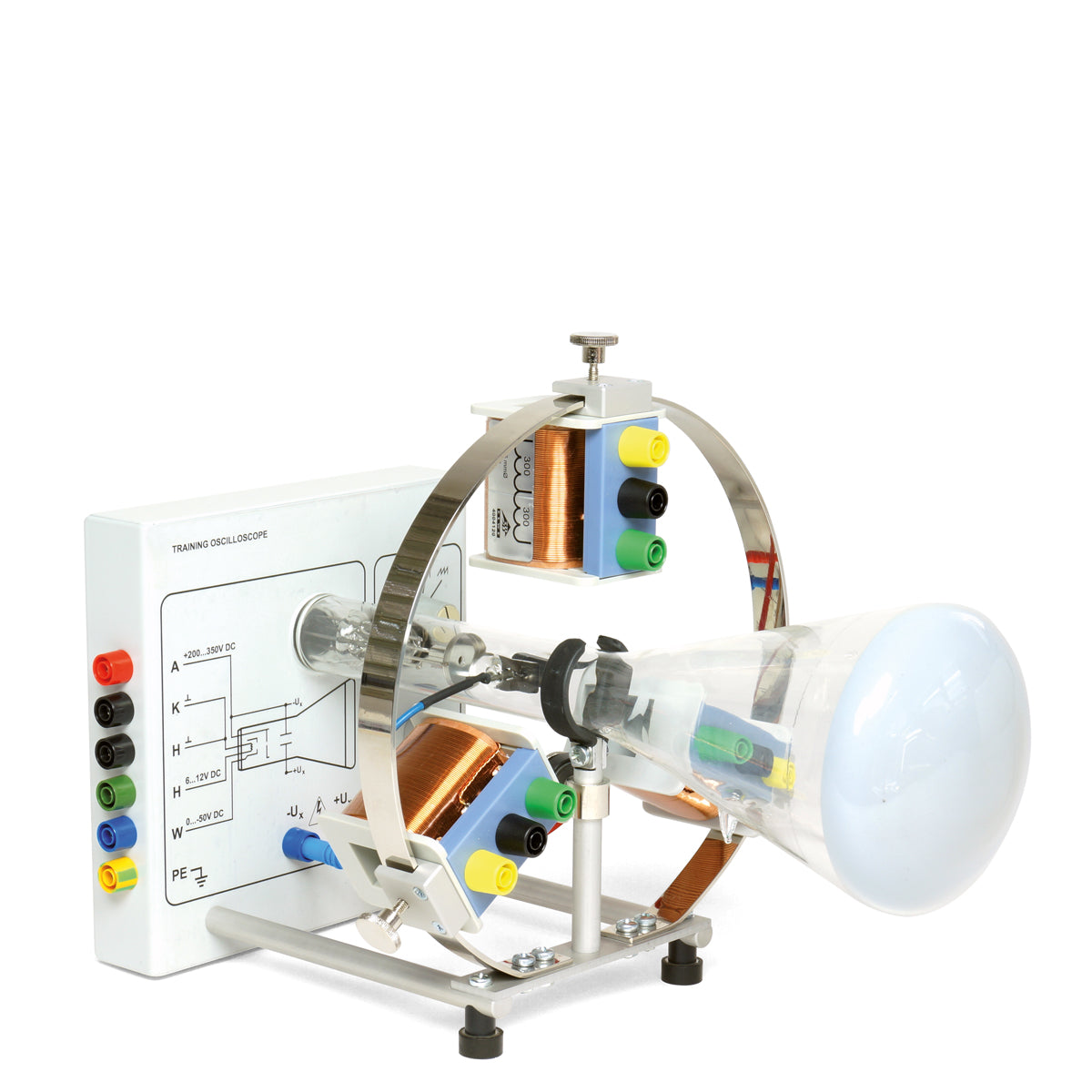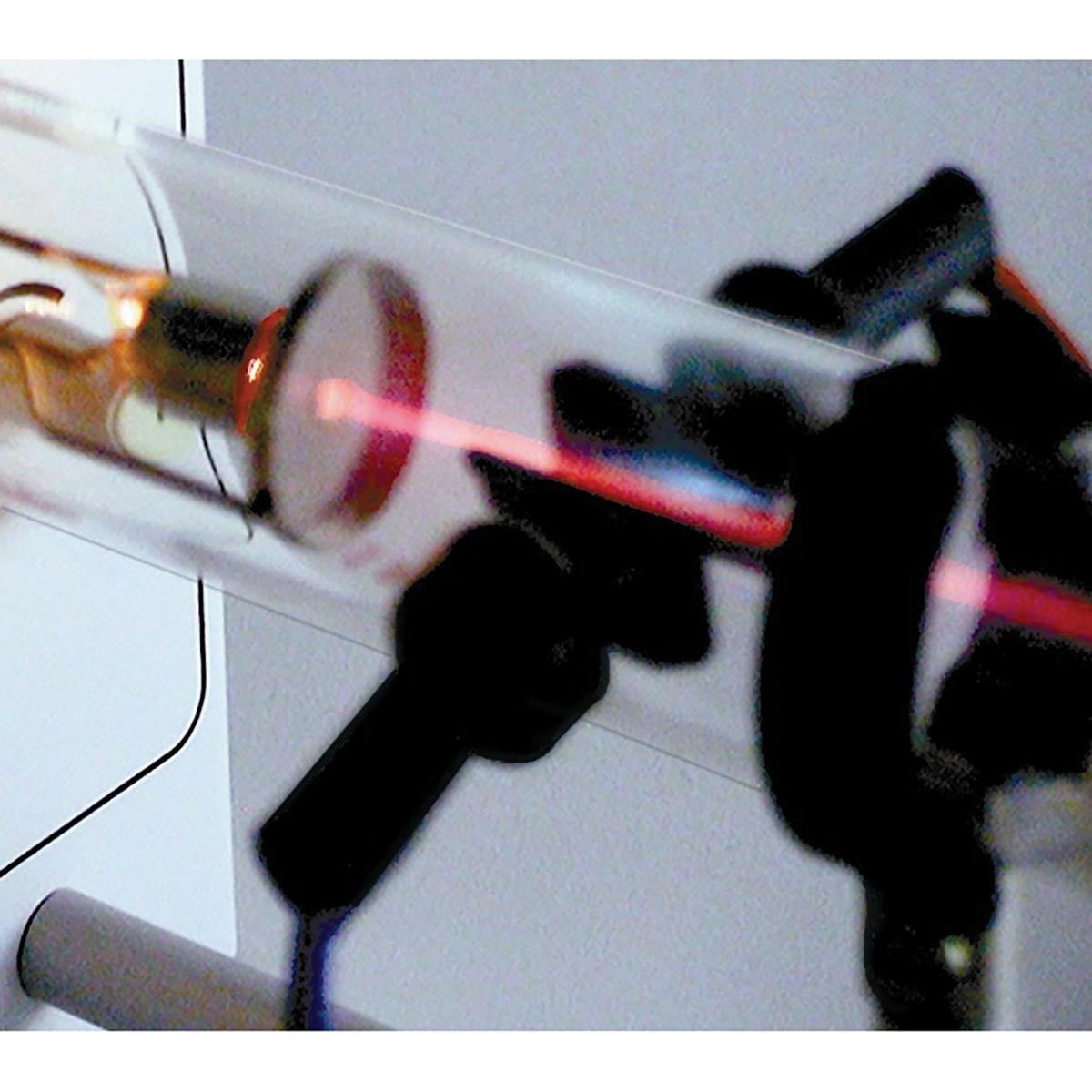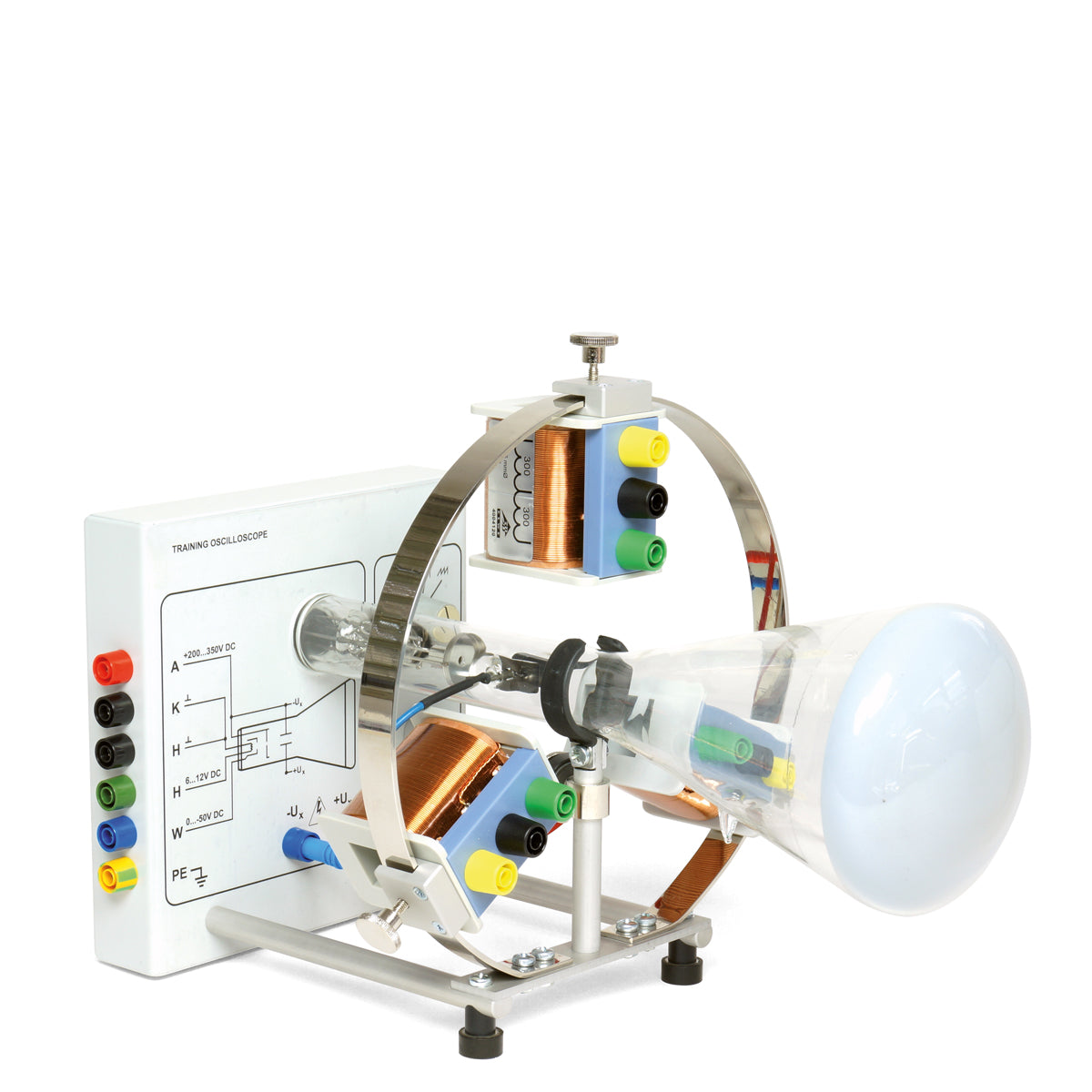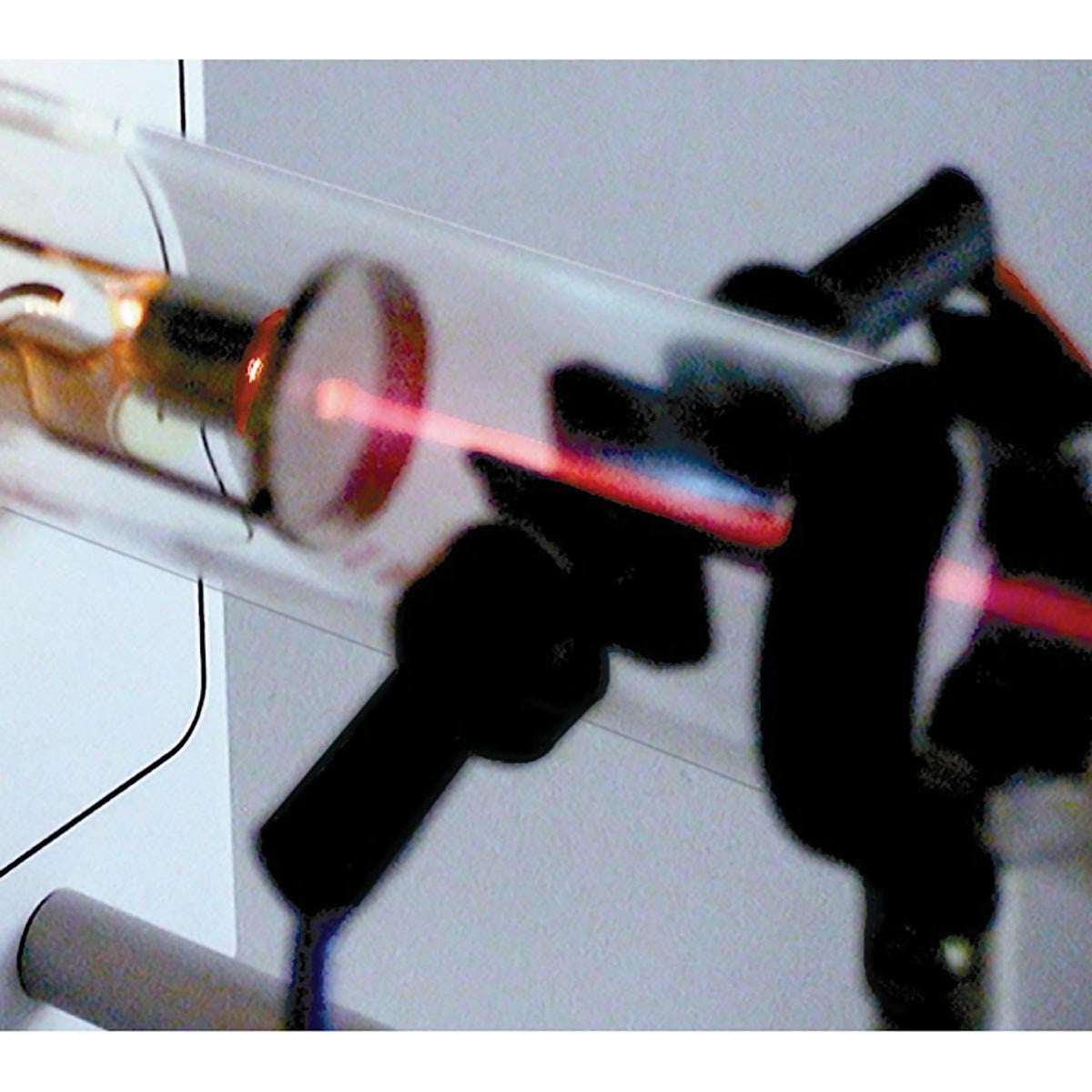KE5521 Cathode Ray Training Oscilloscope
Couldn't load pickup availability
Use this text to encourage communication or promote sharing on social networks.
Cathode Ray Training Oscilloscope
Electron tube mounted on terminal base for investigating the design and operation of modern cathode ray tubes. The electron beam can be deflected by an electric field produced by the deflection plates integrated into the tube, and by a magnetic field from three external coils mounted on a ring. A Wehnelt cylinder is used to focus the beam. A gas filling and fluorescent screen makes it possible to observe the beam in the tube. A continuously adjustable saw-tooth generator can be used to analyze and visualize time dependent processes. The device comes with a socket and printed wiring scheme.
Standard cathode ray tubes for oscilloscopes are poorly suited for demonstrations because important sections of the tubes are electrostatically and magnetically shielded, thus concealed from the view of the observer. Furthermore, these conventional cathode ray tubes require high accelerating voltages making them dangerous for an exposed setup. In order to overcome these disadvantages Klinger has developed an experimental oscilloscope for teaching purposes.
Description Cathode Ray Oscilloscope consists of a modified Braun tube, screen diameter 10 cm, an indirectly heated cathode with a near point source emissive oxide spot, and a disc anode with axial hole. The fluorescent screen employs zinc silicate as phosphor, emitting green light when struck by the electron beam. The prismatic deflection capacitor consists of two deflector plates 20 mm long, 12 mm apart, and positioned between the anode and the fluorescent screen. The tube is mounted on a base plate that delineates the wiring diagram and allows connection of the necessary voltages. The tube is further supported by a ridged ring that allows three solenoid coils to be arranged for magnetic deflection of the beam. These coils, comprised of 2 x 300 turns each and have a DC resistance of 5 Ohms, are on the same plane as the electrostatic deflector plates. A low anode voltage of only 250 VDC is employed.
Experiments
Magnetic deflection of the cathode ray
Approaching a magnet from the side
Deflection with current carrying coils
Deflection with horizontal coil
Variable magnetic field
Vertical deflection
Observation in rotating mirror
Phasing
Phase shift by introducing iron core to coil
Lissajous Figures
Electrostatic deflection
Introducing a timebase
Sawtooth generator
Depiction of voice oscillations
Rotating magnetic field
Hysteresis loops






